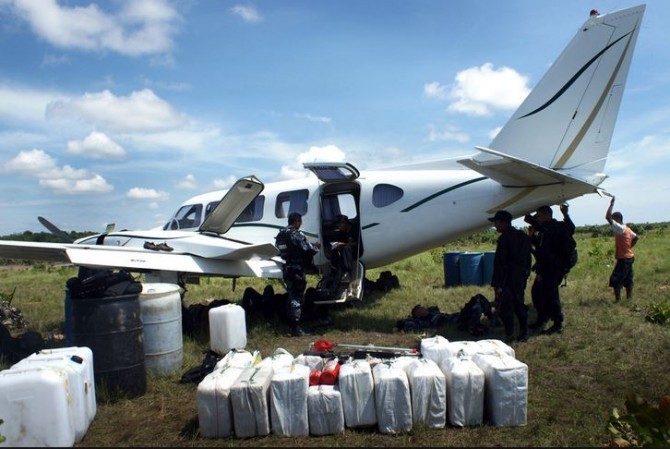By
Ricardo Swire
Several factors make trans-Atlantic air routes attractive to Drug Trafficking Organizations (DTOs). In the 1970s and ’80s drug plane pilots navigated unimpeded between Colombia and staging areas near the US border.
During the era one legendary trafficker, called “Lord of the Skies,” dispatched jet aircraft from Colombia to northern Mexico transporting up to fifteen tons of cocaine. Sub-standard nationally managed radar technology aided South America’s air route capacity to avoid the international air traffic security envelope.
In 2005, after Venezuela’s President ended the country’s relationship with US law enforcement agencies, transnational DTOs increased the number of staging sites on Venezuela’s coasts. A drug flight from Venezuela to West Africa traverses three thousand, four hundred miles. On the global stage 2008’s economic recession idled hundreds of cargo jets and forced such aircraft to be sold inexpensively. The website Planemart.com advertised one DC-8 plane for US$270,000.
A US Drug Enforcement Administration (DEA) document names one particular transnational DTO that has full access to a private airstrip in Guinea. A negotiating team dispatched to arrange direct drug flights from Bolivia to West Africa. The crime syndicate also contemplated buying its own airport. In July 2008 DEA Special Agents, working with West African internal security operatives, intercepted one such flight in Sierra Leone. The aircraft transported six hundred kilos of the DTO’s cocaine. Prior to law enforcement intervention the traffickers amassed US$82 million in Euros, deposited on account in Spain.
Patterns show Caribbean traffickers, in league with international counterparts, also exploit trans-Atlantic air route to financially lucrative drug markets. Recently Washington released documentation that confirmed such synthesis. The official US Court indictment identified a Jamaican trafficker known as “Chad” and a Bahamian called “Arizona.” The Bahamian left the Caribbean for Colombia in 1997, while Chad departed Jamaica for Bogota in 2010.
From their base in northwest South America the Caribbean duo schemed with DTO representatives to smuggle over two thousand four hundred kilos of cocaine to America. From 2011 to 2012 they pursued a US registered 1983 Beechcraft 1900 plane to buy in the Bahamas. The nineteen passenger, twin engine, turboprop aircraft needed to freight three cocaine shipments from Venezuela to Honduras, an airstrip in Haiti designated as refueling point.
While the Beechcraft 1900 resupplied, a second pilot joined for the voyage’s second stage. In May 2012 the first of three drug flights commenced. The Bahamian pilot followed his flight plan to Venezuela and collected the cocaine consignment for Honduras. Acting on shared intelligence Haitian National Police (HNP) counter-narcotics officers intercepted the Beechcraft 1900 after touchdown at the local airfield.
The drug plane’s Bahamian Captain, pilot and one other person aboard were arrested, the cocaine shipment seized. Regional intelligence figures tally Haiti’s drug transshipment operation facilitate one to four tons of cocaine per month, twelve to forty-eight tons of drugs generating US$300 million to US$500 million yearly. The US 2015 National Drug Threat Assessment assigned eighty-seven percent of domestic cocaine flow to Mexico, via Honduras and other Central American staging areas.



No Comments Yet!
You can be first to comment this post!